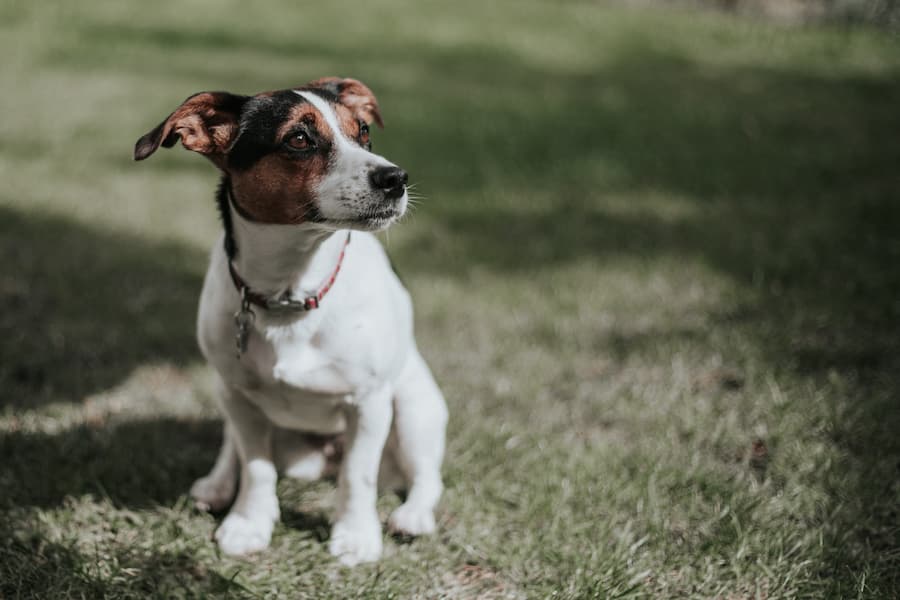Jack Russell Terriers have become a popular breed due to their loyal, affectionate, and friendly nature. Many Jack Russell Terrier clubs have sprung up in the US, and there are manufacturers designing toys and products specifically for Jack Russell Terriers. However, where do Jack Russell Terriers originate from?
Where Do Jack Russell Terriers Originate From?
Jack Russell Terriers originate from England, having been developed to help flush out foxes from their dens in England around the 19th century.
Jack Russell Terriers have their ancestry from Fox Terriers, which were initially developed in Devonshire, England, to help hunt foxes in the mid-to-late 1800s.
Since their development, JRTs have undergone varying changes to help meet the different standards and requirements of different kennel clubs across the globe. Let me dive into the history of JRTs and see the different changes they have undergone over the years since their development.

Initial Breeding in 1819
JRTs are named after Reverend John Russell, a famous fox hunter who had a passion for breeding fox hunting dogs. Since English White Terriers were the common fox hunting dogs, Reverend John Russell wanted a dog with a different coat color so he could differentiate it from the foxes.
In 1819, Rev John Russell purchased a small female Terrier called Trump, which was predominantly white with markings of tan over her eyes and a small patch on the root of the tail.
Typically, Trump became the start of a breeding program that aimed at developing a Terrier that had the courage and high stamina like the English White Terrier but with a different coat color, which is now the Jack Rusell Terrier.
Breeding of Short-Legged and Standard Jack Russell Terriers
After the death of Reverend John Russell in 1883, the breeding of JRTs was continued by Archer from Cornwall and East from Chislehurst. Typically, the breeding was continued from the descendants of John Russell’s dogs. These dogs were not as large as the Show Fox Terriers, weighing under 15 pounds.
In around 1894, Arthus Blake Heinemann bred the first standard JRT. Intending to develop a JRT with better badger digging capability rather than fox hunting, he started the Devon and Somerset Badger Club. The name later changed to Parson JRT Club and then to Annie Harris.
From around 1901 to 1938, the Bull Terrier and JRT mix was developed to help boost the badger digging ability of the JRT. The introduction of bull Terriers into the breed marked the beginning of the short-legged JRT variant.
World War II Transitioning
Heinemann died before World War II, and the Annie Harris Club shut down before World War II. After WWII, people focused on the development and had no time for fox hunting. JRTs started transitioning from field dogs to household pets in English homes.

As a result, JRTs were further crossbred with other smaller dog breeds such as Welsh Corgis and Chihuahuas. In 1976, Ailsa Crawford formed the Jack Russell Terrier Club of America, becoming the first JRT breeder in the US.
The club maintained a registry of the dogs to protect the breeding line. Typically, the club registered dogs in adulthood instead of at birth to make sure the dogs meet the qualities and standards set by the club. JRTs became popular, and other JRT clubs also sprang up, including:
- Jack Russell Club of Great Britain (JRTCGB)
- South East JRT Club (SEJRTC)
- Parson Jack Russell Club of Great Britain (PJRTCGB)
- Carolina’s JRT Club
- Dogwood JRT Club
- Gulf Coast JRT Club
- Magnolia JRT Club
- Rocky Mountain JRT Network
- Midwest JRT Club
- Sunshine State JRT Club
- Southwest JRT Network
- South Coast JRT Club
- Yankee JRT Network
- Virginia JRT Club
- Tri-state JRT Club
American Kennel Club Recognition
From around 1991 to 1999, the American Kennel Club wanted to recognize the JRT. However, this was rejected by the JRTCA as they didn’t want the dog to lose its working qualities. In 2001, the Jack Russell Terrier Breeders Association agreed with the AKC, and the breed was officially admitted.
However, the AKC didn’t recognize exactly the same standards previously set by the JRTCA. The AKC also changed the dog’s name from JRT to Parson Russell Terrier. Later, on 1st January 2016, the Kennel Club (KC) recognized JRTs as a pedigree breed.
Related Questions
Which Dog Breeds Make up the JRT?
JRTs descend from the Smooth Fox Terriers and Wire Fox Terriers. Although it is not known which dog breeds were crossbred, it’s believed they are a mix of Beagles and Bull Terriers.
Beagles were originally bred to hunt hares and rabbits, while Bull Terriers were initially bred to help in vermin control.
Why Did the AKC Change the Name of JRT to Parson Russell Terrier?
The American Kennel Club changed the name of a JRT to Parson Russell Terrier after adjusting the size of a standard JRT to a narrower field. The dog’s name was officially changed to Parson Russell Terrier on April 1st, 2003.
Final Thoughts
Before adopting a JRT, understanding its origin and history can help you know the temperament, personality trait, and physical appearance attributes to expect. Although the breeding of JRTs began in the 18th century, standard JRTs are officially known to have been developed in the 19th century.
